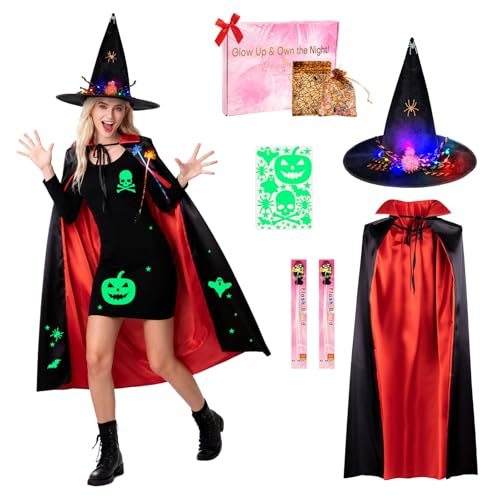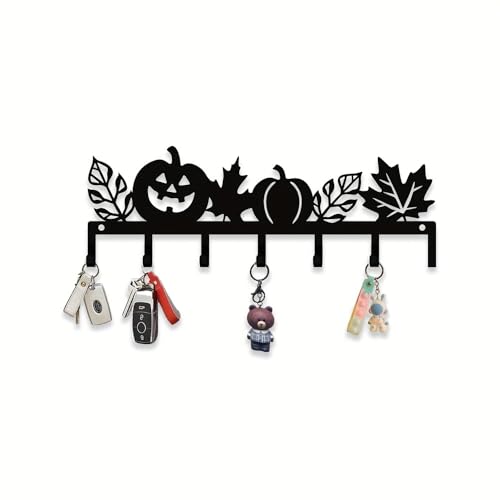Can Halloween Pumpkins Be Eaten?
Halloween is synonymous with pumpkins, but did you know that these festive decorations can also be deliciously edible? While most people associate pumpkins with carving and decoration, certain varieties of pumpkins are perfectly suitable for consumption. In fact, when prepared properly, Halloween pumpkins can be transformed into flavorful dishes that are perfect for the autumn season.
When considering whether Halloween pumpkins are edible, it’s important to understand the different types of pumpkins available. Some pumpkins are specifically grown for their culinary qualities, known as edible varieties. These pumpkins have a sweeter and smoother flesh, making them ideal for cooking and baking.
Cooking uses for Halloween pumpkins are diverse and abundant. Roasted pumpkin seeds make for a healthy and delicious snack, while pumpkin soup provides a comforting and warming meal option. And who can resist a slice of homemade pumpkin pie during the fall season? With Halloween pumpkins, the culinary possibilities are endless.
Choosing the right pumpkin for eating requires some knowledge and inspection. Look for specific varieties, such as sugar pumpkins or pie pumpkins, known for their taste and texture. Check for ripeness by ensuring the pumpkin has a deep, consistent color and a firm stem. inspect the pumpkin for any blemishes or damage that might affect its quality.
Preparing a Halloween pumpkin for cooking involves a few simple steps. Start by washing and cleaning the pumpkin to remove any dirt or debris. Then, carefully remove the seeds and pulp, which can be saved for roasting separately. Once the pumpkin is cleaned and prepared, it can be sliced, diced, mashed, or pureed depending on the desired recipe.
From roasted pumpkin seeds to creamy pumpkin soup and classic pumpkin pie, Halloween pumpkins offer a wide range of culinary delights. It’s important to note some safety considerations when eating Halloween pumpkins. Avoid consuming pumpkins that have been used for carving if they have been left at room temperature for too long or have visible signs of decay.
So, the next time you find yourself surrounded by Halloween pumpkins, remember that they can be more than just decorative. Explore the world of pumpkin cooking and savor the flavors of the season with these versatile and tasty gourds.
Key takeaway:
- Halloween pumpkins can be eaten: Many varieties of pumpkins, including those commonly used for Halloween decorations, are edible and can be used in various cooking recipes.
- Pumpkins offer diverse cooking uses: Halloween pumpkins can be roasted for seeds, used to make soup, or transformed into a delicious pumpkin pie.
- Considerations for choosing and preparing pumpkins: When selecting a pumpkin for eating, look for the right edible varieties, check for ripeness, inspect for blemishes or damage, and effectively remove the seeds and pulp before cooking.
Can Halloween Pumpkins Be Eaten?
Halloween pumpkins can be eaten and are versatile in the kitchen. Can Halloween pumpkins be eaten? They can be transformed into delicious dishes. Here are a few ways to enjoy Halloween pumpkins in your meals:
- Roasted Pumpkin Seeds: Rinse the pumpkin seeds, toss them with oil and salt, and roast them in the oven for a crunchy and nutritious snack.
- Pumpkin Soup: Blend cooked pumpkin into a creamy soup. Sauté onions and garlic, add cooked pumpkin, vegetable broth, and spices like nutmeg and cinnamon. Simmer and blend until smooth.
- Pumpkin Puree: Turn Halloween pumpkins into a smooth puree for recipes like pies, cakes, and muffins. Can Halloween pumpkins be eaten? Cut the pumpkin into chunks, remove seeds and skin, then steam or boil the flesh until tender. Blend until smooth and use in your favorite recipes.
- Roasted Pumpkin Wedges: Cut the pumpkin into wedges, drizzle with olive oil, sprinkle with salt and pepper, and roast until tender and caramelized. They make a tasty side dish or snack.
So, don’t let a carved Halloween pumpkin go to waste. Get creative in the kitchen and enjoy the delicious flavors of this festive vegetable. Can Halloween pumpkins be eaten?
What Is a Halloween Pumpkin?
“What Is a Halloween Pumpkin?
A Halloween pumpkin is a type of orange winter squash associated with Halloween. It is used for carving jack-o’-lanterns and as decorations. Halloween pumpkins are larger and rounder than other pumpkins, making them ideal for carving. They have thick outer skins, hollow interiors filled with seeds and fibrous flesh. While edible, Halloween pumpkins are not grown for taste but for decorative and symbolic purposes. When choosing to eat a Halloween pumpkin, select a fresh one, as older pumpkins lose their taste and texture. Not all pumpkins are suitable for eating, as specific cultivars are bred for culinary purposes. Halloween pumpkins can still be cooked if desired.”
Can You Eat Halloween Pumpkins?
Can You Eat Halloween Pumpkins? Let’s dig into the delicious possibilities of Halloween pumpkins. Discover the edible varieties that can be transformed into delectable dishes. We’ll also uncover the diverse cooking uses for these vibrant gourds. Get ready to tantalize your taste buds and explore the culinary potential of Halloween pumpkins!
1. Edible Varieties of Pumpkins
Edible Varieties of Pumpkins:
To delve into the world of edible varieties of pumpkins, please refer to the table provided below:
| Variety | Description | Taste |
| Sugar Pie Pumpkin | A small to medium-sized pumpkin with sweet and smooth flesh. | Deliciously sweet, ideal for baking pies and making desserts. |
| Cinderella Pumpkin | A vibrant, deeply-ribbed pumpkin used decoratively and in cooking. | Rich, dense flesh, perfect for roasting, pureeing, and soups. |
| Blue Hubbard Squash | A large squash-like pumpkin with blue-gray skin and sweet, bright orange flesh. | Sweet and buttery taste, great for baking, roasting, and making purees. |
| Jarrahdale Pumpkin | A medium-sized pumpkin with pale gray or blue skin and smooth orange flesh. | Mild and slightly sweet, excellent for soups, stews, and purees. |
| Delicata Squash | A small, elongated pumpkin with orange and yellow stripes and creamy flesh. | Rich and sweet, perfect for baking, roasting, and stuffing. |
Pro-tip: When on the hunt for an edible pumpkin, keep an eye out for ones that are firm, heavy for their size, and with intact stems. It is advisable to steer clear of pumpkins with bruises, soft spots, or mold. Don’t be afraid to try out different varieties to uncover your preferred flavors and textures when it comes to cooking with pumpkins.
2. Cooking Uses for Halloween Pumpkins
Halloween pumpkins have multiple cooking uses. The pumpkin seeds can be roasted to create a nutritious and tasty snack. The flesh of the pumpkin can be pureed and combined with other ingredients to make pumpkin soup, a dish that brings warmth and comfort. Pumpkin pie, a timeless dessert, is prepared by baking a sweet and creamy filling crafted from the pumpkin flesh in a pie crust. Halloween pumpkins can be transformed into delicious treats like pumpkin bread, pumpkin muffins, and pumpkin pancakes. The pureed pumpkin flesh can serve as a foundation for a variety of dishes such as curries, stews, and pasta sauces.
How to Choose a Pumpkin for Eating?
Looking to enjoy a delicious pumpkin meal this Halloween? Let’s dig into the nitty-gritty of choosing the perfect pumpkin for eating. From selecting the right varieties to checking for ripeness and inspecting any blemishes or damage, we’ll arm you with the knowledge you need to pick the best pumpkin for your culinary adventures. And once you’ve got the perfect pumpkin, we’ll even guide you through the process of removing the seeds and pulp. Get ready to turn your Halloween pumpkin into a delectable feast!
1. Look for the Right Varieties
Edited
1. Look for the Right Varieties
To choose the right varieties of Halloween pumpkins for eating, follow these steps:
- Look for pumpkin varieties labeled edible or cooking pumpkins. These pumpkins have denser and sweeter flesh compared to decorative pumpkins.
- Choose pumpkins with deep orange color. This indicates ripeness and full flavor development.
- Inspect the pumpkin for blemishes or damage. Avoid pumpkins with soft spots, mold, or cuts, as they may indicate spoilage or poor quality.
- Ensure the pumpkin feels heavy for its size. This indicates higher water content, resulting in better texture and taste.
- Consider the pumpkin’s size. Smaller pumpkins are typically more tender and flavorful, while larger pumpkins may be too fibrous and less suitable for cooking.
By following these steps, you can choose the right varieties of Halloween pumpkins ideal for cooking and eating. Always wash the pumpkin thoroughly before preparing it for cooking. Happy pumpkin cooking!
2. Check for Ripeness
When determining the ripeness of a pumpkin, it is important to check for ripeness using these steps:
- Check for ripeness by looking for a deep orange color. Avoid pumpkins with green or pale spots.
- To check for ripeness, press your finger against the pumpkin’s skin. It should feel firm with no give.
- Examining the stem is another way to check for ripeness. A ripe pumpkin will have a dry, brown stem.
- It is important to check for uniform size and shape when evaluating the ripeness of a pumpkin.
During my visit to the pumpkin patch last year, my goal was to select a pumpkin for baking. By following these steps to check for ripeness, I was able to find a perfect pumpkin. It displayed a vibrant orange color, had firm skin, a dry stem, and a uniform shape. This pumpkin allowed me to create a delicious pumpkin bread that turned out moist and flavorful. By checking for ripeness, I ensured that I had a pumpkin that was ideal for cooking. It was an absolute hit with my family and friends during our Halloween gathering.
3. Inspect for Blemishes or Damage
When inspecting Halloween pumpkins for blemishes or damage, follow these steps:
1. Inspect the pumpkin’s surface for signs of mold or soft spots, which indicate rotting.
2. Look for cuts or punctures, as these can be entry points for bacteria or insects.
3. Examine the pumpkin’s stem to ensure it is intact and securely attached.
4. Inspect the color of the pumpkin, which should be vibrant and uniform without any discoloration or dark spots.
5. Gently press the pumpkin with your finger; it should feel firm and solid without any softness or squishiness.
6. Inspect the bottom of the pumpkin for signs of decay or molding.
7. Consider the overall appearance of the pumpkin, ensuring it has no visible bruises, cuts, or deformities.
8. If you notice any blemishes or damage, choose a different pumpkin in better condition.
By following these steps, you can inspect for blemishes or damage and ensure that the Halloween pumpkin you choose is free from blemishes or damage and is suitable for eating or carving.
2. Removing the Seeds and Pulp
2. Removing the Seeds and Pulp
To remove seeds and pulp from a Halloween pumpkin, follow these steps:
1. Cut off the top of the pumpkin with a sharp knife.
2. Scrape out the seeds and pulp from the center of the pumpkin using a large spoon or ice cream scoop.
3. Place the seeds and pulp in a bowl or colander.
4. Separate the seeds from the pulp by running them under water and using your fingers to remove any remaining pulp.
5. Drain the seeds and pat them dry with a towel.
6. If desired, roast the pumpkin seeds for a delicious snack. Spread them on a baking sheet, drizzle with olive oil, sprinkle with salt or other seasonings, and bake at 350°F (175°C) for about 10-15 minutes or until golden brown.
7. Use the pulp to make pumpkin puree for recipes like pumpkin soup, pumpkin pies, or pumpkin bread. Blend the pulp in a blender or food processor until smooth.
By following these steps, you can easily remove the seeds and pulp from a Halloween pumpkin, allowing you to use the pumpkin for cooking or carving. Remember to dispose of any leftover scraps properly or compost them for sustainability.
What Can You Cook with Halloween Pumpkins?
Unlock the culinary potential of Halloween pumpkins! Discover a world of flavors with these versatile gourds. From the crunchy goodness of roasted pumpkin seeds to the warm and comforting pumpkin soup, and not to forget the classic pumpkin pie, we’ve got you covered. Get ready to tantalize your taste buds and learn how to transform these festive decorations into delectable dishes. So grab your apron, sharpen your knives, and let’s dive into the delightful world of cooking with Halloween pumpkins!
1. Roasted Pumpkin Seeds
Roasted pumpkin seeds are a must-have snack during the Halloween season. Anyone can make them by following a few simple steps.
Begin by thoroughly cleaning and separating the seeds from the pumpkin. After that, give the seeds a good rinse to get rid of any remaining pulp. Then, spread them out on a baking sheet and drizzle them with some olive oil, ensuring they are evenly coated. To add a burst of flavor, sprinkle some salt or other seasonings on top.
Now, it’s time for them to go into a preheated oven at 350 degrees Fahrenheit. Let them bake for about 15-20 minutes, or until they turn a beautiful golden brown. Remember to let them cool down before indulging in the delightful crunch and taste.
Last Halloween, my family and I had a blast carving pumpkins and preparing roasted pumpkin seeds. Our secret blend of seasonings included salt, garlic powder, and a pinch of cayenne pepper for a spicy kick. It was a hit among everyone, and we ended up making multiple batches throughout the night.
It truly was a fun and flavorful way to fully embrace the Halloween spirit together.
2. Pumpkin Soup
Pumpkin soup is a comforting dish made from Halloween pumpkins. Here are the details:
1. Preparation: Cut the pumpkin into halves, remove the seeds and pulp, then roast the chunks until tender.
2. Ingredients: You’ll need roasted pumpkin, vegetable or chicken broth, onions, garlic, and seasonings like salt, pepper, and thyme or sage.
3. Cooking Process: Sauté the onions and garlic in oil until translucent. Add the roasted pumpkin chunks and broth to the pot and bring to a boil. Simmer for 20-30 minutes, then blend until smooth.
4. Additional Flavors: Add spices like cinnamon, nutmeg, or curry powder, and experiment with ingredients like coconut milk or cream for a creamier texture.
5. Serving: Once blended and seasoned, the pumpkin soup is ready to serve. Garnish with cream, pumpkin seeds, or herbs.
Last Halloween, I made pumpkin soup for my friends at a dinner party. I used a recipe with ginger and chili flakes for an added kick. The aroma filled the kitchen, and my friends couldn’t resist trying the pumpkin soup. They loved the rich flavor and creamy texture of the soup. It became the highlight of the evening, and everyone wanted seconds. It’s now a Halloween tradition for us.
3. Pumpkin Pie
Pumpkin pie is a delicious dessert that can be enjoyed during the fall season, especially around Halloween.
Made from roasted or boiled pumpkin, this dessert is a perfect way to showcase the natural sweetness and earthy flavors of the pumpkin.
To make pumpkin pie, simply mash the cooked pumpkin and mix it with eggs, sugar, spices like cinnamon, nutmeg, and cloves, and evaporated milk.
Pour this delectable mixture into a pie crust and bake it until the filling is set and the crust turns a beautiful golden brown.
Pumpkin pie is typically served chilled or at room temperature, and it is often topped with a dollop of whipped cream.
While it is a popular Thanksgiving dessert, this delightful treat can be enjoyed throughout the entire fall season.
So go ahead and indulge in a slice of pumpkin pie to truly savor the flavors of autumn.
Are There Any Safety Considerations When Eating Halloween Pumpkins?
When eating Halloween pumpkins, there are safety considerations to keep in mind. First, ensure that there are any safety considerations when eating Halloween pumpkins. First, ensure the pumpkin has not been previously carved and left out for a long time. Carved pumpkins can breed bacteria and mold, making them unsafe to eat. Also, make sure to wash the pumpkin thoroughly before cooking or consuming to remove dirt and contaminants.
Another important consideration is using proper cooking techniques. Pumpkin can be roasted, steamed, or boiled. Cook it thoroughly to kill any potential bacteria or parasites that may be present.
If you plan to eat the pumpkin seeds, clean and roast them properly to eliminate any bacteria or mold that could be present.
Did you know that pumpkins are native to North America? They were a staple food for Native American tribes before European settlers arrived. Pumpkins were eaten, used medicinally, and as a dye source. Today, pumpkins are part of Halloween traditions as decorations and ingredients in dishes.
Frequently Asked Questions
Can Halloween pumpkins be eaten?
Yes, Halloween pumpkins can be eaten, but not all varieties are ideal for cooking. Carving pumpkins are typically thinner-skinned and better for carving, while cooking pumpkins, also known as sugar pumpkins, are sweeter and have a texture similar to butternut squash. Some pumpkins, like the Connecticut field pumpkin, are versatile enough for both carving and eating.
What precautions should be taken when carving a pumpkin for eating?
If you have already carved a pumpkin, it is not advisable to eat it. Once a pumpkin has been modified from its original state, it should be treated as potentially hazardous food and handled with safety precautions in mind. You can still use the seeds and flesh for cooking if you set them aside while carving and cook them right away.
How can Halloween pumpkins be composted?
To avoid waste, Halloween pumpkins can be composted. Cut the pumpkin into smaller pieces to speed up decomposition and make it easier to bury in the compost pile. Alternatively, you can feed it to backyard chickens, as long as it hasn’t been painted.
Are there any flavorful alternatives to Halloween pumpkins?
Yes, there are more flavorful alternatives to Halloween pumpkins for those looking to enjoy pumpkin. Look for smaller varieties like sugar pumpkins or heirloom varieties, which are typically meatier and more flavorful. These pumpkins are better suited for cooking purposes and can be used in a variety of tasty recipes.
What can be done with Halloween pumpkins after October 31st?
After October 31st, instead of eating Halloween pumpkins, it is recommended to compost them or donate them to local farmers for their animals to enjoy. By using the pumpkins in these ways, you can reduce food waste and make a positive impact on the environment.
Where can I find tasty recipes for cooking Halloween pumpkins?
You can find a variety of tasty recipes for cooking Halloween pumpkins online. Websites like Empress of Dirt offer tips and information on gardening, including recipes for fragrant pumpkin soup, rustic pumpkin bread, pumpkin purée, and more.











